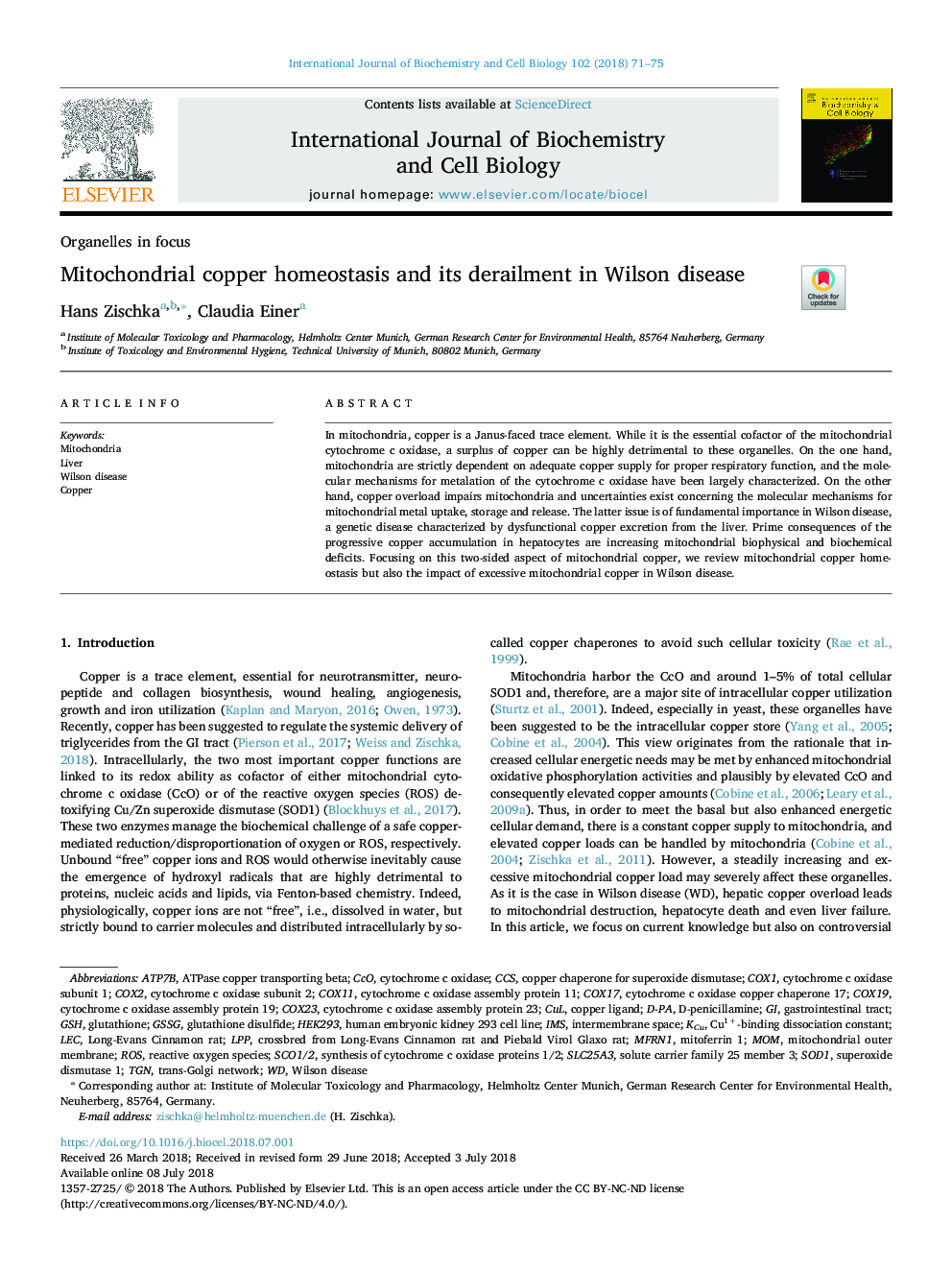| Article ID | Journal | Published Year | Pages | File Type |
|---|---|---|---|---|
| 8321882 | The International Journal of Biochemistry & Cell Biology | 2018 | 5 Pages |
Abstract
In mitochondria, copper is a Janus-faced trace element. While it is the essential cofactor of the mitochondrial cytochrome c oxidase, a surplus of copper can be highly detrimental to these organelles. On the one hand, mitochondria are strictly dependent on adequate copper supply for proper respiratory function, and the molecular mechanisms for metalation of the cytochrome c oxidase have been largely characterized. On the other hand, copper overload impairs mitochondria and uncertainties exist concerning the molecular mechanisms for mitochondrial metal uptake, storage and release. The latter issue is of fundamental importance in Wilson disease, a genetic disease characterized by dysfunctional copper excretion from the liver. Prime consequences of the progressive copper accumulation in hepatocytes are increasing mitochondrial biophysical and biochemical deficits. Focusing on this two-sided aspect of mitochondrial copper, we review mitochondrial copper homeostasis but also the impact of excessive mitochondrial copper in Wilson disease.
Keywords
HEK293cytochrome c oxidase subunit 2Cox17ATP7BLECcox2COX1CCOGSSGLPPGSHCCSIMSd-PenicillamineROSGastrointestinal tractCytochrome C oxidase subunit 1human embryonic kidney 293 cell linecytochrome c oxidaseCopper chaperone for superoxide dismutasemitochondrial outer membraneculintermembrane spaceMoMLong-evans cinnamon ratGlutathioneglutathione disulfideReactive oxygen species
Related Topics
Life Sciences
Biochemistry, Genetics and Molecular Biology
Biochemistry
Authors
Hans Zischka, Claudia Einer,
